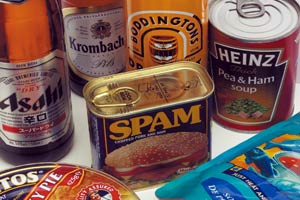Commercial Pasteurization and Sterilization
Many processed foods supplied to the food market are packaged in bottles, cans or sealed pouches. These products, as part of the processing step, need to be pasteurized/sterilized in the final packaging to guarantee food safety and extend shelf life, without any other form of preservation, such as chilling or freezing. One example is the pasteurization and sterilization of filled beer bottles in conveyorized, raining hot water and steam pasteurization lines. Batch retort sterilization at pressure is common in the processing of food products packaged in either pouches, glass jars or metal cans. Sliced meats that have already been cooked will often be flash pasteurized after the packaging process, to remove contaminant microorganisms on the meat surface in order to guarantee consumer safety.
- At a Glance
- Featured Solutions
- Resources
To prove that a packaged food product is sterilized or pasteurized, it is critical that the food processor monitor the core or surface temperature of the packaged food to guarantee that enough heat is imparted for a sufficient amount of time in order to kill the target microorganism. The internal product core temperature profile, measured throughout the complete sterilization process, is critical to allow lethality calculations to be performed and provide evidence that the product is safe to eat.
- Prove packaged food safety (critical to HACCP) by providing accurate lethality data from successful sterilization or pasteurization
- Allow quick, efficient validation of either new or existing thermal treatment processes for packaged foods
- Quickly identify process problems, reducing product waste and improving productivity
- Create fully traceable process QA / Validation records, providing evidence against legal/waranty claims
 Thermal Profiling Systems
Thermal Profiling Systems Thermal Profiling Systems
Thermal Profiling SystemsGet more information about Fluke Process Instruments solutions for this application
